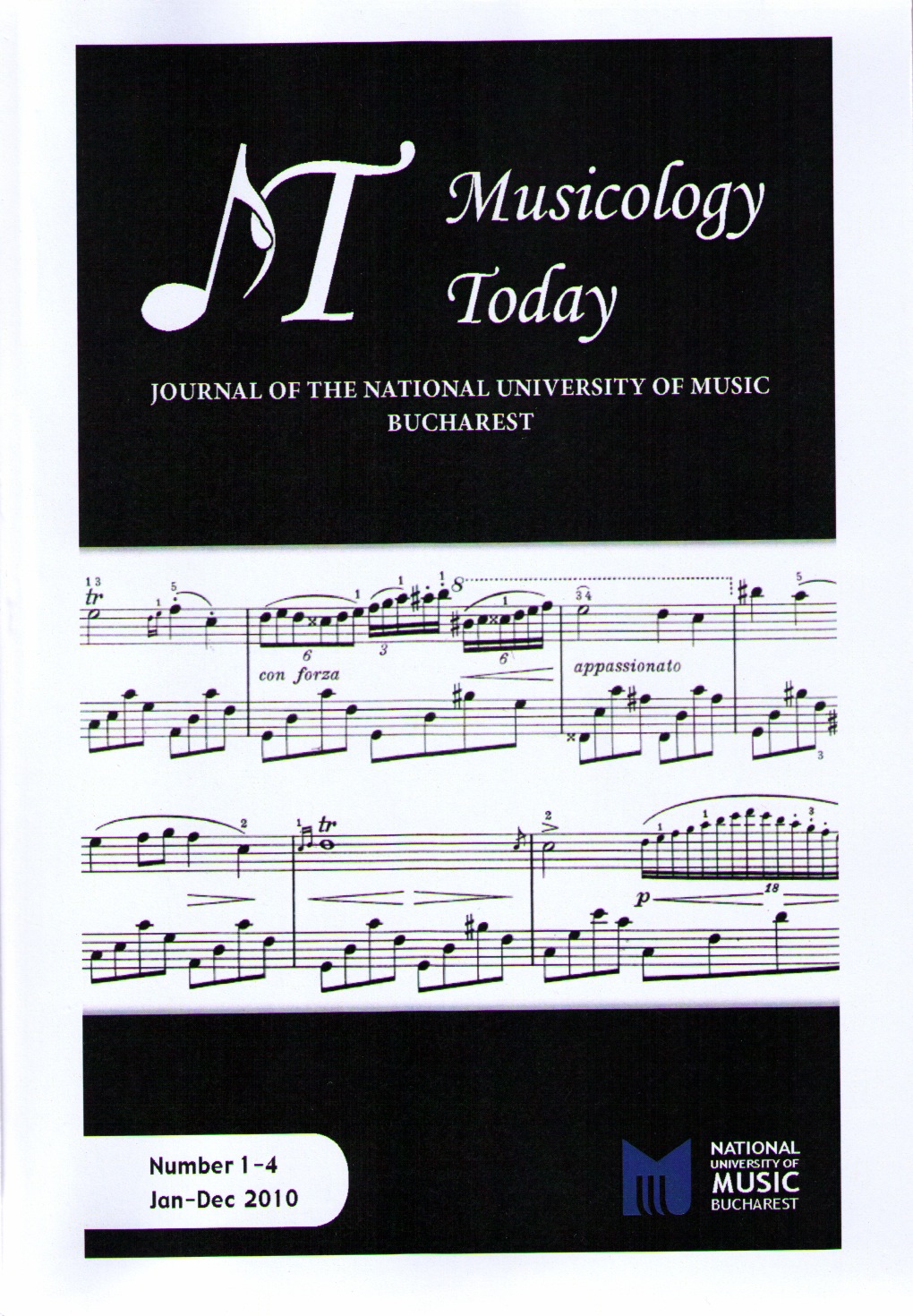„Surconventionalism” in the interpretation of Paweł Szymański and Stanisław Krupowicz
„Surconventionalism” in the interpretation of Paweł Szymański and Stanisław Krupowicz
Author(s): Anna Granat-JankiSubject(s): Music, Editorial
Published by: Editura Universității Naționale de Muzică din București
Keywords: „Surconventionalism”; Paweł Szymański; Stanisław Krupowicz;artistic method;
Summary/Abstract: Surconventionalism is a term invented by Paweł Szymański and Stanisław Krupowicz in 1984, aiming to an artistic method, a technique (coming, of course, from surrealism). Paweł Szymański has used it since 1978 (Partita II for orchestra), and Stanisław Krupowicz since 1981 (Tempo 72 for amplified harpsichord and strings, String Quartet No. 2). Some analyses (Szymański: Partita III, Partita IV, quasi una sinfonietta, Recalling a Serenade and Krupowicz: Tako rzecze Bosch, Tempo 72, Wariacje pożegnalne na temat Mozarta, Fin de siècle) will show the differences of understanding surconventionalism. Stanisław Krupowicz believes that this method consists of the confrontation of several stylistic conventions and creation of a certain context from these conventions, which could not have come into being in any so far existing style. Surconventionalism is, therefore, according to him, “an art of composing contexts”. Paweł Szymański, however, thinks that surconventional method relies on the transformation of “basic structure”, also called by him “deep structure”. This leads to two-level composing of music.Paweł Szymańsk i dismantles, and then distorts musical structures and conventions, while Stanisław Krupowicz chooses to make unreal musical reality by distortion and destruction and surprising juxtaposition its elements as this manner is closer to him.
Journal: Musicology Today: Journal of the National University of Music Bucharest
- Issue Year: 1/2010
- Issue No: 4
- Page Range: 216-229
- Page Count: 14
- Language: English

